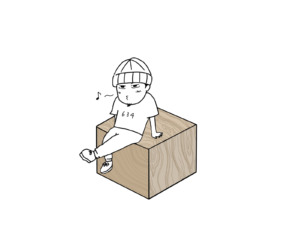The wood and metal enclosure samples that were displayed at the recent listening session have been newly updated with the COPPER BLUE back plate that was missing.

Although there are some woods and metals that are not included in the sample samples, we have selected popular and stable quality items that are often used in 634EARS earphones.
The problem is how to convey the impact of wood on sound to all of you.
To understand the differences in sound caused by wood selection in rear cabinets, it is essential to first understand how the rear cabinet influences sound.
I have come to realize that certain terms such as “wood resonance” and “distortion” can be interpreted with slightly different nuances in the Japanese language, and I often hear discussions that make it seem as if sound is resonating inside the rear cabinet and can be heard.
While many people tend to associate the concept of reverberation, echoes, and reflections with the sound that occurs when striking or blowing on metal or wooden objects, this primarily pertains to the front cabinet located in front of the driver. As mentioned before, the rear cabinet influences the movement of the vibrating diaphragm that produces sound, rather than directly producing those resonances as audible sounds.
Furthermore, it is understandable that the term “wood resonance” evokes the image of warm reverberation or echoes, giving the perception that some sound is being emitted within the rear cabinet. Similarly, the term “distortion” in the context of audio equipment can be misunderstood as sound being distorted. However, in this context, “distortion” refers to the deformation (bending, warping) of the material. It means that the air inside the rear cabinet is compressed due to the movement of the diaphragm, causing the cabinet to deform (although it does not actually bend), resulting in a reactive force applied to the diaphragm.
Explaining these concepts requires a significant amount of time and careful explanation. Unfortunately, unless these concepts are understood, it is difficult to comprehend the differences in sound caused by wood materials.
Let’s create easily understandable content in the form of a single shape.
I previously created a brochure about wood materials in Japan, and I continue to send it to those who request it. However, I feel that the current 34-page text-heavy explanation is too difficult for the general audience.
I am planning to create something simpler and more understandable, specifically targeting countries outside of Japan. I am considering making them available for viewing on a website and also creating videos.
This is indeed a challenging task, so it may take some time. However, I believe it is an essential aspect that cannot be avoided. Once I overcome this challenge, selecting cabinet materials will become much more enjoyable. Since everyone has different preferences for sound, having the ability to customize an earphone slightly to match their preferences or ideals is a flexible and wonderful aspect.
I am eager to start working on it, so please allow me some time.


